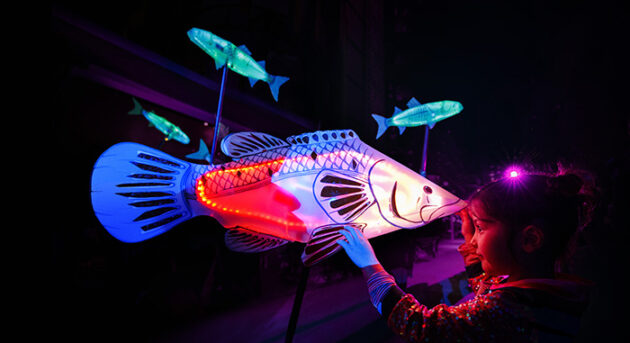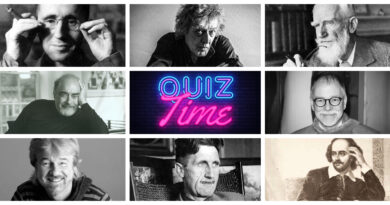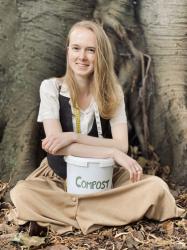The Composting Costumier talks Duba and Badu with Erth
This interview took place between Boon Wurrung land of the Kulin Nation and Gadigal land. I acknowledge the Australian Aboriginal and Torres Strait Islander peoples as the first inhabitants and traditional custodians of the nation and pay my respects to their Elders past and present.
Recently I caught up with Erth Visual and Physical Inc.’s Artisic Director Scott Wright to talk about their upcomng installation at the Sydney Festival. Duba and Badu are to projects currently on at Carriageworks from January 8-24 2021.
*Please note, this interview took place in early December 2020.
…
CC: I want to talk about the projects you’re doing for the Sydney festival: Badu and Duba. Can you speak a bit about those?

SW: So, Earth is a company that currently makes work based on a long-range, slow-burn basis. We used to make way too many things in way too short a time period, but we’ve since drifted into taking a longer time to make stuff.
Badu and Duba are part of a much bigger project, actually called Ark which is a long term project that looks at the preciousness of animals on the verge of extinction. There’s a lot of play on words, because the word Ark is spelt “ARC”. It comes from the Latin base of “arc” or “arcus”, which in translation can mean chest, so the thing we hold precious in our chest is our heart. But in biblical sense, the Ark is the place where all the animals were put to save them from the flood.
So Badu and Duba are the first incarnations of that bigger concept.
Duba is Gadigal for ground and Badu is Gadigal for water. Duba will look at animals that live on, above and under the ground. We’re featuring some pretty amazing creatures in the form of a guided tour.
Small groups of adults are led by children through an installation in which those adults come in contact with five or six animals that are on the critical route or threatened. We’re sort of exploring the idea of empathy. If I can’t take people to Sumatra to witness the extinction of the Sumatran Pygmy Rhino, the next best thing I can do is create a beautiful Sumatran Pygmy Rhinoceros and have people meet it under conditions that I control. Can puppetry serve a function that is far greater than just entertainment?
I’m quite excited about this part of the project, because we’re going into somewhat uncharted territory. Our goal is to evoke a fairly serious emotional response: Can we make people cry? But for good reasons?
I don’t want to have people walking out bawling their eyes out, but can the experience be so profound that it causes people to choose to do something in response?
Could we at the end of the work, just gently encourage people to join World Wildlife Fund or [better] still, think more locally?
CC: What was the idea behind having the children lead the tour?
My work has always had some focus on engagement with young people. I was particularly interested in how you can explain a herd of elephants in a room, at Carriageworks, in Sydney, because it just doesn’t exist in an adult kind of sense. But the idea is that the children see the world with infinite potential. Therefore, the children are the ones that can open the doorways or paths to adults that they can’t otherwise experience. We don’t have to explain why these animals are there. It’s simply the infinite potential that children bring to it that allows that to happen.
I think there’s something really powerful about the children being the future, showing the adults who are the past, what’s going on in the present.
CC: I was listening to a podcast about a similar thing: young adult children being the ones having conversations about climate change and things like that with their parents. So it is an interesting, common thing that’s coming up.
SW: I’ve been working with an Italian artist, Chiara Guidi for the last 10 years. She’s one of those pioneers of immersive theater in general. In the 90s, she did a lot of amazing things for kids in her hometown of Chiesina. She was experimenting with taking a great deal of risks with [what you create for] children, giving them everything, exposing them to whatever [information] they wanted to be exposed to. Not in any kind of negative way, but we live in a world where we’re increasingly getting more and more protective of children, we’re cotton-balling them. I think I’m the last generation that played on the streets and didn’t have to show up until after it got dark. We don’t live in a world where that can happen anymore. I feel like my job as an artist is to try to give children back those opportunities.

There will always be [a focus on] children in the work that I do. With Duba, the idea is that a group of adults have all of their senses taken from them. So they have touch, taste, sight, and hearing taken from them. And these children lead them blindly on this journey and only give them their senses back gradually. In the first room they’re given back their sight, in the second their hearing, in the third room, they’re given back their touch. Unfortunately, because of COVID, we can’t do taste, but we’re going to put smells in all the rooms. So you’ll be able to smell bushfires and rotting straw and mushrooms.
Then there’s Badu, which is Gadigal for water. We’re basically creating an Acknowledgement of Country that is an evocation, or a recognition of Sydney Harbour and all the animals that live in it. The idea around it is starting to shift a little in to look at the idea of Sydney Harbour being this living entity unto itself. There’s everything that we think about the harbour in our society: as a place where there’s boats and pollution, and all this traffic and human intervention. Whereas 250 years ago, the Gadigal people, or people of the grass trees, and every other clan, language group and tribe that lived on the harbour, lived more harmoniously with the harbour. They knew when the Humpback Whales were migrating back down the coast and where the mothers would come in and rest with their babies in the safety of the harbour. Thinking about the harbour in the sense of it having some kind of feminine quality because it’s a place of birth or a place of life.
CC: Quite a few of your projects approach, Indigenous folklore: you had one at Vivid Festival previously, can you speak more on that?
SW: She was called Marri Dyin, which is Gadigal for Great Woman. Actually she doesn’t belong to anybody’s story: she’s a contemporary concept, but the aim was to acknowledge or recognize women of the Eora Nation, which has now expanded to the First Nations women of this Country. Because they are the child bearers and cooks and people who would build the Gunya (the shelters). In Sydney on Gadigal Country, they would go out onto the harbour and they would fish all day.
And [this acknowledgement is] not just because it was a matriarchal society, but [because] we also [currently] live in a society where women aren’t valued equally to men. And I think we need to consciously put women first.
Acknowledging those First Nations women is a really important thing. We know who Bennelong is, and who Pemulwuy is, but only recently did we name a precinct in Sydney after a woman, which is Barangaroo.
CC: We spoke a little bit earlier about the large scale and long term nature of your projects, given the environmental themes around that, what sort of considerations do you have towards environmental sustainability and processes?
SW: Well, I guess no one will ever be better than Briony Anderson at making anything that is 100%, recycled, reclaimed, repurposed! Briony is a very dear friend, but she’s also an amazing inspiration.
Erth really started after the logging protests in East gippsland in the 90s. It was born out of this need for us as artists to be activists. For the first few years, everything we ever did was issue driven. I think as we’ve gotten older and better at what we do, we can now make work that isn’t necessarily always about finger pointing. I think there’s plenty of other organizations that are telling us what’s wrong. Whereas I think what we’re exploring at the moment is “How do you give greater value to things?”
I think empathy is the thing that we’re playing with, we’re not necessarily saying “Here is something bad”. But [instead] “here’s something good that might inspire you”. Action can also come through positive reinforcement, as well as bearing witness.
It’s a hard one. The idea of how we carbon neutralize ourselves is really interesting. That’s been a big discussion in recent times. With COVID, and everything shutting down, there’s a lot of chatter around “when we’re able to bounce back, let’s not just go back to how it used to be, let’s be able to bring change with us”.So with a company like Erth, a lot of what we do is touring, and touring overseas. So already we produce a huge carbon footprint because of the amount of travel. How can we do that more responsibly?
CC: Touring seems like the common thing between most arts organizations in terms of their impact. How far have you gotten with that conversation? Are you still in the early stages or have you found ways that you think you’ll approach that?
SW: One thing that we’ve been doing more recently is training up people. We have shows that have been touring America, Japan, UK. The easiest way is rather than sending a whole team over from Australia is just send one person and have them train up local people.
In the future, I imagine driving a hybrid semi trailer truck with solar panels on the roof, collecting energy into a Tesla wall that’s built into the back of the truck. Then when you arrive at the theatre, you roll out all your 12 volt wireless speakers and lights, set everything up and do a whole show in these venues, but never plug anything into their power. So you basically bring a carbon neutral show. You know, it’s a good idea!
CC: We’ll get there!
SW: We will, we absolutely will. It’s not a pie in the sky idea. I’ve been trying to get the Opera House to consider doing a carbon neutral show, where we put some solar panels outside on the Western wing, looking towards the Sydney Harbour Bridge, and just have a sign on the solar panel, promoting the show that’s going to happen in four months time, like we’re storing all this energy in readiness.
CC: That’s really cool! Touring is such a blockage for so many companies and having so many people who just say “I just I don’t know how we deal with this”, it’s amazing to speak to someone who has such big ideas in this area.
SW: I think it’s the smaller companies like us that are already thinking about all that stuff. I think it’s the bigger companies that actually should be more responsible. But how to make them accountable, I just don’t know. We can only do what we do and lead by example.
The other thing is that it shouldn’t be a novelty. Once upon a time, I think we were guilty of saying how much of our work was recycled. Or how much was repurposed. Or even making a show about recycling! But nowadays, everybody knows you should recycle, who needs to be educated about that? It’s a given.
Even, last year (2019) there was a company here in Sydney, highly regarded, established, medium-sized company, very highly respected. And I saw them pitch a show where they said, “we’re doing this show all about recycling. We’re using costumes that we’ve had in storage, and 35% of our show is recycled” I just thought, you can’t even brag about that anymore, it should just be how you’re doing it.
There’s no point in boasting about how carbon neutral your show is, you should just be working towards 100% carbon neutrality. In fact you should be punished for not.
CC: Yeah exactly. And we spoke a little bit about how you try to incorporate benefits to children and education and things like that into your company. And I noticed on your website, that you have a lot of workshops and master classes.Can you speak a bit about the importance of that?
SW: You know, it’s interesting, we don’t have any set workshops. If we’re ever asked to do a workshop, it will be based on whatever we feel like at the time. But I like to think of things more as kind of laboratories rather than workshops. I like to remove the expert, actually.
I think master classes are really important. And I think that I have many people whose work I am inspired by, who I love. And having the opportunity to be able to work with them is a really great thing. But at the same time, I think that we place this reverence over people sometimes, which is unrealistic. I think that people doubt their own ability.
Particularly when I work with children, I no longer go into that space where I consider myself an expert, or that I know more than them. In fact, I think of it the other way around in that it’s a privilege and there’s something that I get to learn from those children.
And it’s certainly something that we’re in the process of looking at how we can develop that further, conceptually and philosophically within the company? So that we spend more time working with children so that we can be better at making work for them?

CC: Yeah. And it’s like you were saying earlier that if they’re the future generations, then why don’t we give them agency earlier? Like, why should they have to wait till they’re in their 30s and 40s, especially with the world we live in now?
SW: Chiara Guidi said “children are born with the wisdom, it’s only as they get older that they start to lose it”, when they become adults that are preoccupied with relationships and mortgages. They forget all the things that they were capable of when they were a child. And children are designed to bounce. Even in crisis, children find positive or they find a way to survive.
One of the things that Chiara pointed out was on TV, she’d seen a natural disaster on the news, and while the interviewer was talking to someone about how terrible it was that they’d lost their house and everything, in the background there were children playing chasey. That’s pretty cool. The children are still finding a way of playing, having fun.
I think also with the idea of workshops and classes and everything, I feel like we live in a society where there’s this kind of prescribed methodology around all of that, and I’m much more interested in… are you aware of John Marsden’s school Candlebark in Mount Macedon? He’s got this little tiny school tucked away behind Mount Macedon. And it’s just the most beautiful place where children are encouraged to question everything and for them wisdom is more important than knowledge – knowing something about something because you’ve experienced it, rather than someone’s told you. Investigation is encouraged. And also to question.
CC: And I think also that’s part of building empathy, like when you experience something you have empathy with that experience, whereas being told something it’s just words.
SW: I want to spend more time hanging out with young people, asking lots of questions and, you know, being prepared to be educated, rather than being the one who’s teaching.
CC: I saw one of your past projects called the Anthropocene virtual reality. What was that about?
SW: I was working with the film director, Samantha Lang. Anthropocene was looking at this lake on an island just off the coast of from Brisbane. Sam had been spending a bit of time on the island and had been talking with the traditional owners about the connection to this particular lake. And we were starting to play around with virtual reality. So, we kind of looked at this idea of trying to create that lake within a lo-fi aspect. So rather than trying to make everything using computers and CGI, we made everything out of cardboard. And we would fly the viewer, over and around the lake, and then down into the lake, so that you went down through the water, and then the silt, then the soil and into all of the various layers of underneath the lake, it was an experiment.
CC: The last question is whether you have any outside of the industry personal sustainability tips or habits you’d like to recommend to others? What’s your compost like?
SW: My compost is amazing! I love my compost!
I think my advice to anybody is just try and find the time in the day to take your shoes off and walk on the grass. We’re so disconnected from the natural world. And it’s a simple act of taking your shoes and socks off and walking in the grass.
Through this interview Scott would like to support local wildlife shelters and carers in my area, so I have chosen to support Fly By Night Bat Clinic Inc. in Melbourne.




